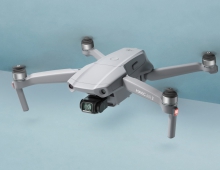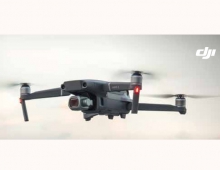
U.S. to Test Drone Operations Through the Unmanned Aircraft Systems Integration Pilot Program
The U.S.Transportation Secretary Elaine Chao announced that the Department of Transportation has selected 10 state, local and tribal governments as participants in the Federal Aviation Administration's Unmanned Aircraft Systems (UAS) Integration Pilot Program.
The Integration Pilot Program has brought together the cross section of partners necessary to carry out the type of testing that will drive benefits for communities across the country and guide industry growth.
First announced last October, this White House initiative partners the Federal Aviation Administration (FAA) with local, state and tribal governments, which then partner with private sector participants to safely explore the further integration of drone operations.
"Data gathered from these pilot projects will form the basis of a new regulatory framework to safely integrate drones into our national airspace." said Secretary Chao.
The 10 selectees are:
Choctaw Nation of Oklahoma, Durant, OK
City of San Diego, CA
Innovation and Entrepreneurship Investment Authority, Herndon, VA
Kansas Department of Transportation, Topeka, KS
Lee County Mosquito Control District, Ft. Myers, FL
Memphis-Shelby County Airport Authority, Memphis, TN
North Carolina Department of Transportation, Raleigh, NC
North Dakota Department of Transportation, Bismarck, ND
City of Reno, NV
University of Alaska-Fairbanks, Fairbanks, AK
The UAS Integration Pilot Program will help tackle significant challenges to integrating drones into the national airspace and will reduce risks to public safety and security. The program is a coordinated effort to provide certainty and stability to communities, drone owners and the rapidly evolving drone industry. In less than a decade, the potential economic benefit of integrating UAS in the nation's airspace is estimated at $82 billion and could create 100,000 jobs.
Over the next two and a half years, the selectees will collect drone data involving night operations, flights over people and beyond the pilot's line of sight, package delivery, detect-and-avoid technologies and the reliability and security of data links between pilot and aircraft. The data collected from these operations will help the USDOT and the FAA craft new enabling rules that allow more complex low-altitude operations, identify ways to balance local and national interests related to UAS integration, improve communications with local, state and tribal jurisdictions, address security and privacy risks, and accelerate the approval of operations that currently require special authorizations.





















